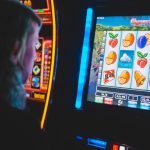Download links
How to install Mastering Parkour: Unleashing Your Inner Athlete with botb63 APK?
1. Tap the downloaded Mastering Parkour: Unleashing Your Inner Athlete with botb63 APK file.
2. Touch install.
3. Follow the steps on the screen.
Description
Parkour, often described as the art of movement, is a discipline that emphasizes fluidity, efficiency, and creativity in traversing obstacles. Originating in France in the late 20th century, it has evolved from a practical means of navigating urban environments into a global phenomenon that encompasses physical training, philosophy, and community. At its core, parkour is about overcoming obstacles—both physical and mental—by utilizing techniques such as running, jumping, climbing, and rolling.
Practitioners, known as traceurs (male) or traceuses (female), aim to move from point A to point B in the most efficient way possible, often incorporating acrobatic elements and improvisation. The philosophy behind parkour extends beyond mere physicality; it encourages individuals to embrace challenges and develop resilience. This mindset is crucial, as parkour practitioners often find themselves in unpredictable environments where adaptability is key.
The discipline promotes a deep connection with one’s surroundings, urging participants to view urban landscapes not merely as barriers but as opportunities for exploration and expression. This perspective fosters a sense of community among practitioners, who often share tips, techniques, and encouragement, creating a supportive network that transcends geographical boundaries.
Key Takeaways
- Parkour is a physical discipline that involves moving through urban environments using only the human body and the surroundings to propel oneself.
- Strength and agility are essential for parkour, and can be developed through bodyweight exercises, plyometrics, and functional training.
- Mastering parkour techniques and movements requires practice, patience, and a deep understanding of one’s body and surroundings.
- Overcoming fear and building confidence in parkour can be achieved through gradual progression, visualization, and positive self-talk.
- Creating and navigating parkour courses involves identifying and utilizing obstacles, understanding flow and momentum, and adapting to different environments.
Developing Strength and Agility for Parkour
To excel in parkour, developing strength and agility is paramount. The physical demands of the discipline require a well-rounded fitness regimen that targets various muscle groups while enhancing overall body control. Strength training should focus on functional movements that mimic the actions performed in parkour.
Exercises such as squats, lunges, and push-ups build foundational strength, while plyometric drills like box jumps and burpees improve explosive power. Incorporating resistance training with weights or bodyweight exercises can further enhance muscle endurance, which is essential for executing multiple movements in succession. Agility is equally important in parkour, as it allows practitioners to navigate obstacles with precision and speed.
Agility drills can include ladder drills, cone sprints, and agility hurdles that challenge coordination and quick directional changes. Additionally, practicing dynamic movements such as vaults and rolls not only improves agility but also builds confidence in one’s ability to handle various terrains. Flexibility training should not be overlooked; incorporating stretching routines can enhance range of motion and reduce the risk of injury.
A well-rounded approach to strength and agility will lay a solid foundation for mastering more complex parkour techniques.
Mastering Parkour Techniques and Movements

Mastering parkour techniques involves a progressive approach to learning various movements that are integral to the discipline. Fundamental techniques include the precision jump, vaults, wall runs, and rolls. The precision jump requires a combination of balance and control, as practitioners leap from one surface to another with accuracy.
This technique is essential for navigating gaps between obstacles and requires practice to develop the necessary spatial awareness. Vaults are another cornerstone of parkour, allowing traceurs to clear obstacles efficiently. Common vaults include the speed vault, lazy vault, and kong vault, each serving different scenarios depending on the height and type of obstacle.
Practicing these movements on lower surfaces before progressing to higher ones can help build confidence and technique. Wall runs are crucial for scaling vertical surfaces; they require a combination of speed, timing, and foot placement to execute effectively. Finally, mastering the roll is vital for safely landing from jumps or falls, distributing impact across the body to minimize injury risk. Each of these techniques requires dedicated practice and refinement to achieve fluidity and efficiency.
Overcoming Fear and Building Confidence in Parkour
| Technique | Success Rate | Difficulty Level |
|---|---|---|
| Precision Jump | 80% | Intermediate |
| Wall Run | 70% | Advanced |
| Roll | 90% | Beginner |
| Underbar | 60% | Intermediate |
Fear is an inherent part of learning any new skill, especially one as physically demanding as parkour. Overcoming fear is essential for progress; it involves confronting mental barriers that can hinder performance. One effective strategy is gradual exposure to challenging movements or heights.
By starting with smaller obstacles and progressively increasing difficulty, practitioners can build confidence in their abilities while reducing anxiety associated with failure or injury. Visualization techniques can also play a significant role in overcoming fear. By mentally rehearsing movements before attempting them physically, traceurs can create a sense of familiarity that eases apprehension.
Additionally, practicing with a supportive community can provide encouragement and motivation. Sharing experiences with fellow practitioners fosters an environment where individuals feel safe to take risks and learn from one another’s successes and setbacks. Building confidence in parkour is a journey that requires patience and persistence; each small victory contributes to a greater sense of self-assurance.
Creating and Navigating Parkour Courses
Creating parkour courses involves an understanding of both the environment and the principles of movement. A well-designed course should incorporate a variety of obstacles that challenge different skills—such as jumping, climbing, and balancing—while allowing for creative expression in how they are navigated. Urban environments offer an abundance of potential courses; railings, walls, benches, and stairs can all serve as elements within a course.
When designing a course, it’s important to consider safety first; ensuring that surfaces are stable and free from hazards will help prevent injuries. Navigating a parkour course requires not only physical skill but also strategic thinking. Practitioners must assess their surroundings quickly to determine the most efficient path through obstacles.
This involves analyzing each element of the course—considering factors such as height, distance, and surface texture—to make informed decisions about which techniques to employ.
Additionally, filming oneself while navigating courses can provide valuable feedback for improvement; reviewing footage allows practitioners to identify areas for refinement in technique or strategy.
Incorporating Parkour into Your Fitness Routine

Incorporating parkour into a fitness routine offers a dynamic alternative to traditional workouts while promoting overall physical health. The versatility of parkour allows individuals to tailor their training based on personal goals—whether focusing on strength building, agility enhancement, or skill mastery. A typical parkour workout might include a warm-up consisting of mobility exercises followed by strength training focused on functional movements relevant to parkour techniques.
In addition to strength training, agility drills can be integrated into regular fitness sessions to improve coordination and speed. For instance, setting up an obstacle course that includes various jumps, vaults, and rolls can provide an engaging workout that challenges both body and mind. Furthermore, incorporating flexibility training through yoga or dedicated stretching sessions can enhance performance by improving range of motion and reducing injury risk.
Parkour also encourages outdoor activity, which can be beneficial for mental well-being. Practicing in natural environments or urban settings allows individuals to connect with their surroundings while engaging in physical activity. This connection fosters a sense of adventure and exploration that can invigorate one’s fitness routine.
FAQs
What is parkour?
Parkour is a physical discipline that involves moving through an environment in a fluid and efficient manner, using only the human body and the surroundings to propel oneself.
What are the basic movements in parkour?
Basic movements in parkour include running, jumping, climbing, vaulting, and balancing. These movements are used to navigate obstacles and terrain in an urban or natural environment.
Is parkour dangerous?
Parkour can be dangerous if not practiced with proper training and caution. It involves high-risk movements and requires a high level of physical fitness and mental focus.
What are the benefits of practicing parkour?
Practicing parkour can improve strength, agility, coordination, and mental discipline. It also promotes creativity and problem-solving skills as practitioners navigate obstacles in their environment.
Is parkour only for young and fit individuals?
Parkour can be practiced by individuals of all ages and fitness levels. However, it is important to start with proper training and progress at a pace that is suitable for one’s abilities.
Are there any specific gear or equipment required for parkour?
While parkour can be practiced with minimal equipment, some practitioners may use specialized shoes with good grip and support, as well as gloves for protection. It is important to wear comfortable and flexible clothing that allows for freedom of movement.





